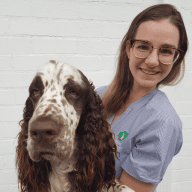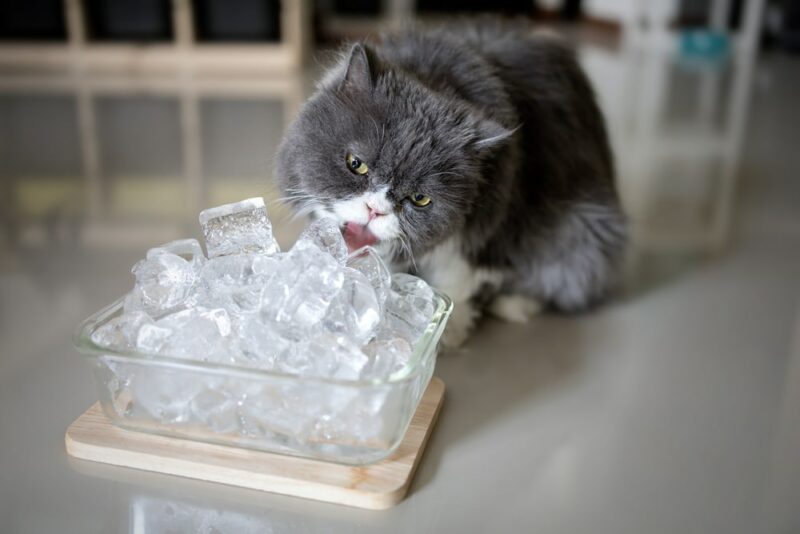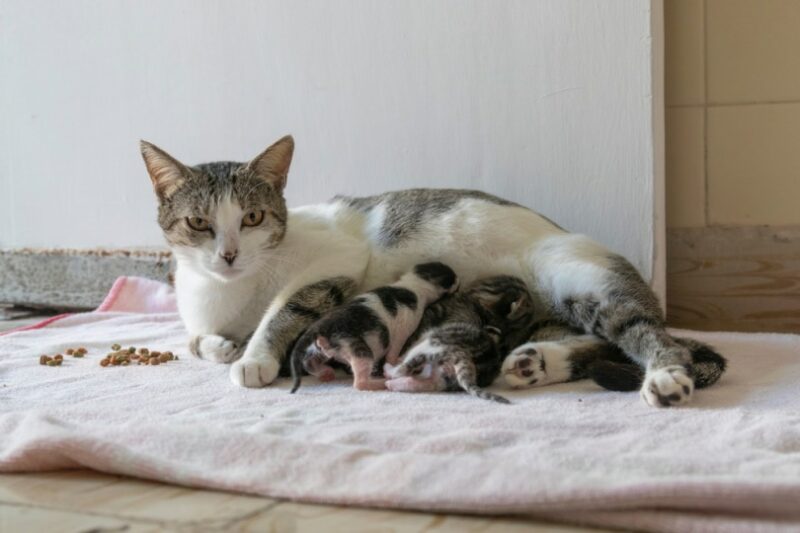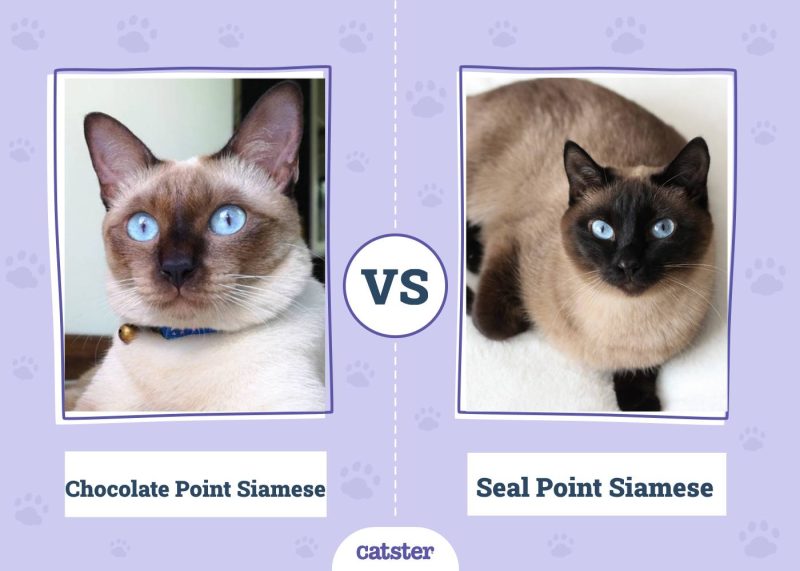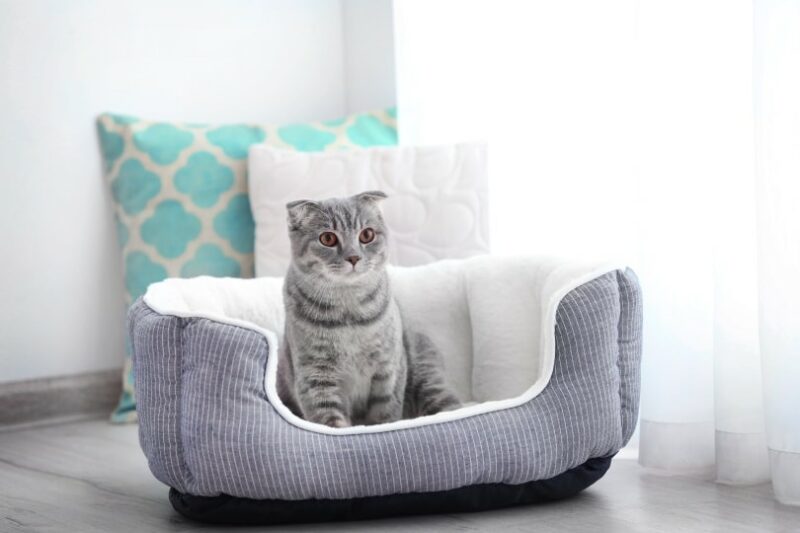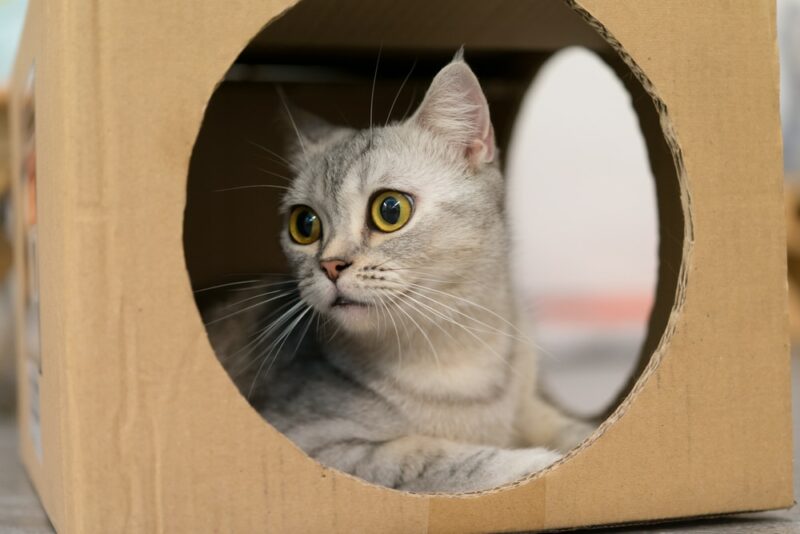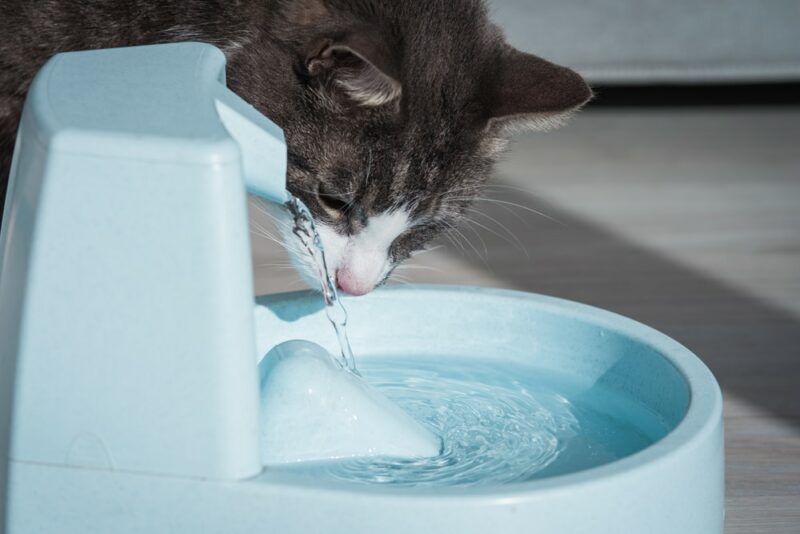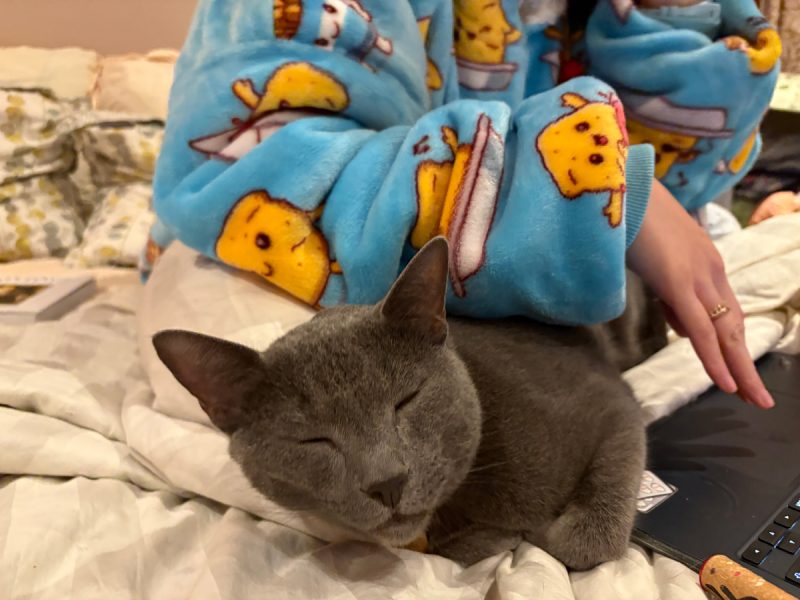This article has been reviewed by a qualified veterinarian using information available at the time of review. The knowledge of feline medicine is continually evolving. This article is not intended to replace consultation with a veterinarian for your specific pet. It does not take into account your pet’s unique circumstances.
Heat stroke and heat exhaustion are very dangerous conditions for cats. Outdoor cats without appropriate shade, cats stuck in warm environments (such as cars), long-haired and brachycephalic (flat-faced) breeds, such as Persians, are all at risk of heat stroke or heat exhaustion.
It’s vitally important that owners protect their pets from the heat and know what to do in an emergency; this article will take you through 10 ways to cool your cat down and how to prevent heat stroke.

The 10 Ways to Cool Down Your Cat and Prevent Heat Stroke
1. Know the Signs and Contact the Vet
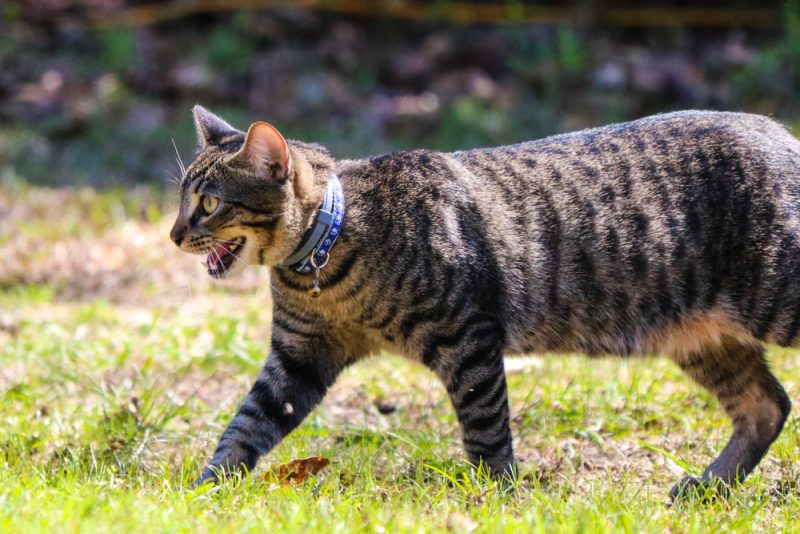
The most important thing you can do for your cat is recognize the signs of heat exhaustion and heat stroke. Heat exhaustion is a warning sign that your cat is getting too hot and their body temperature is dangerously high.
Heat stroke is when your cat’s temperature rises to the point of bodily damage and potential death. The signs of heat exhaustion and heat stroke are similar, but there are key differences that can help you assess your cat’s condition.
- Body temperature of 103°–104° F
- Seeking cool places such as tiled floors or bathtubs
- Panting
- Drooling
- Self-grooming (to cool)
- Drinking
- Sweating paws
It’s important to help your cat cool down if they experience these signs, as untreated heat exhaustion can quickly lead to heat stroke and tissue damage.
- Body temperature of over 104° F
- Reddened gums
- Disorientation
- Collapse
- Seizures
- Panting, wheezing, labored breathing
- Small pin-prick-sized spots on the skin, whites of the eyes, gums, and ears (petechia)
- Vomiting (may be bloody)
- Diarrhea (may be bloody)
In either case, you should always contact a vet for advice. If your cat shows signs of heat stroke, it is a critical emergency, and your cat should be taken to the vet immediately!
If you need to speak with a vet but can't get to one, head over to PangoVet. It's an online service where you can talk to a vet online and get the advice you need for your pet — all at an affordable price!

2. Stay Calm
Stress can exacerbate your cat’s condition, and they’ll rely on you to get them help as effectively as possible. The signs of heat stroke can be very distressing for owners, but keeping calm can reassure your cat and help you get them the treatment they need.
This is particularly true for cats that experience seizures since they can be very confused and scared when they come out of the seizure, and it’s important to keep them calm.
3. Move Your Cat to a Cooler Area
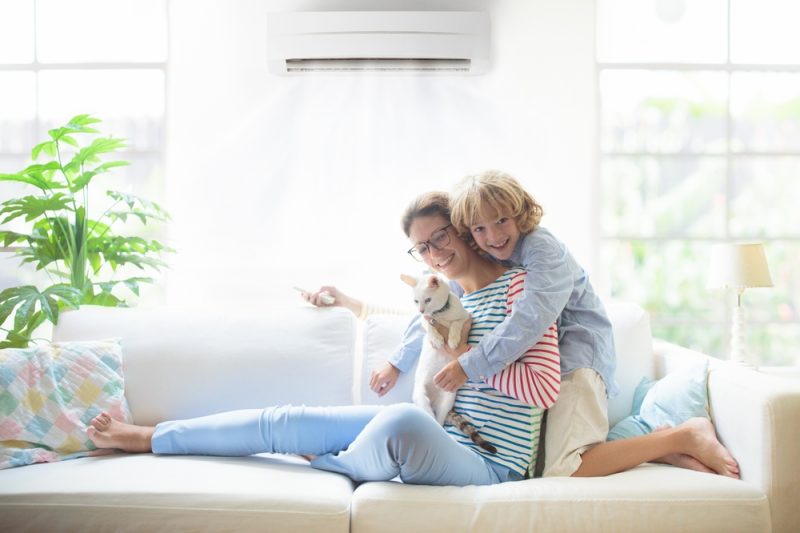
If your cat is outside or in a warm area of the home, such as a shed or garage, moving them to a cooler area is vital.
Shaded areas are okay, but bringing your cat into a room with air conditioning is preferred since the circulating air can evaporate sweat and water off their skin, cooling them down. Also, keep the room quiet so they can calm down.
4. Use a Damp Towel
A towel dampened with cool water and placed under your cat is a good way to cool down their body. Cooling their core temperature is critical, and placing a cool towel against your cat’s abdomen is best.
However, keeping your cat calm is important; if your cat doesn’t allow you to touch their belly, draping the towel over them is also beneficial. Ensure you keep the towel cool by re-wetting it every few minutes, and always monitor your cat’s condition.
5. Offer Them Cool Water
Your cat will likely want to drink when they’re overheating, so offering them small sips of cold water regularly is a good way of cooling them down. Some cats may like to lick ice cubes in the water.
Don’t force water on your cat since it may stress them out, and keeping them calm is very important. It’s vital to ensure they don’t inhale any water.
Ensuring that your cat drinks enough water can be challenging, but with a little creativity and the right fountain, it can be achieved. Hepper's Stainless Steel Cat Water Fountain is a great product that will motivate your cat to stay hydrated by providing fresh, flowing water. This model is easy to clean and offers excellent triple filtration, multiple flow modes, and a large capacity, making it an excellent choice for your furry friend.
At Catster, we’ve admired Hepper for many years and decided to take a controlling ownership interest so that we could benefit from the outstanding designs of this cool cat company!
6. Wet Their Paws
Another way to help cool your cat is to wet their paws since they sweat through their paws. Don’t use very cold water or ice to cool your cat, as this can cause constricted blood vessels, which reduces their ability to cool down. The water on their paws helps cool the blood that goes through the vascular area but mainly helps cool them as it evaporates.
You can gently pour cool water all over your cat to quickly cool them down, but be very cautious they don’t inhale the water. It may cause them stress; each cat will have their own tolerance level.
7. Use Air Conditioning or a Fan

Adding to the evaporation method mentioned earlier, you can place a fan or air conditioning unit in front of your cat while their paws and ears are wet to rapidly evaporate the water off their skin and cool them down.
Air conditioning is ideal since it’ll cool the whole area and bring your cat’s temperature down.
8. Always Make Sure Your Cat Can Get Cool
It’s important to ensure your cat can get somewhere cool or has ways to cool down to prevent heat exhaustion and heat stroke. You can place cooling pads around your home where your cat likes to hang out if it gets too warm.
Shaded areas with good airflow can also keep your cat cool. Never leave your cat in the car for any period, even if the outside temperature doesn’t feel that warm. The air in cars gets very hot quickly, and a cat left in a car is at extreme risk of heat stroke.
9. Groom Them Regularly
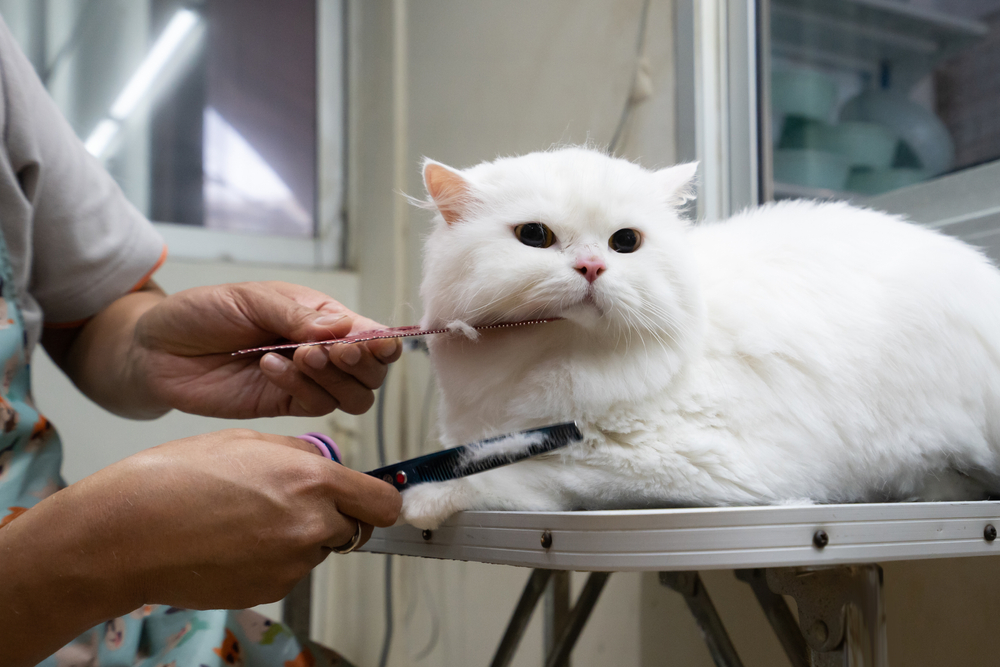
If your cat is a long-haired breed, such as a Persian, they’re likely used to regular grooming. Grooming your cat in the warmer months is important, as it can help prevent them from overeating and remove dead hair that can trap heat.
Even short-haired cats benefit from having dead hair removed from their coats. If your cat has very long or matted hair you could consider clipping them in the warmer months.
10. Keep Outdoor Cats Inside on Hot Days
Lastly, outdoor cats are more at risk of heat stroke in the warmer months. Your cat may get stuck somewhere that quickly gets incredibly hot, such as greenhouses, or may try to shelter from the heat in a dangerous place.
Keeping your cat indoors on warm days can keep them safe from heat stroke and means you can keep an eye on them to ensure they’re kept cool.

Conclusion
It is incredibly important to keep your cat cool and know what to do if they begin suffering from heat stroke. Time is of the essence when dealing with heat exhaustion, and your cat can suffer permanent tissue damage, neurological problems, or die if they get too hot.
Luckily, there are simple things you can do to ensure they have places to cool off in the summer months, but if they do overheat, cooling them down quickly and contacting a vet is essential.
Featured Image Credit: Chaiwat Hemakom, Shutterstock
